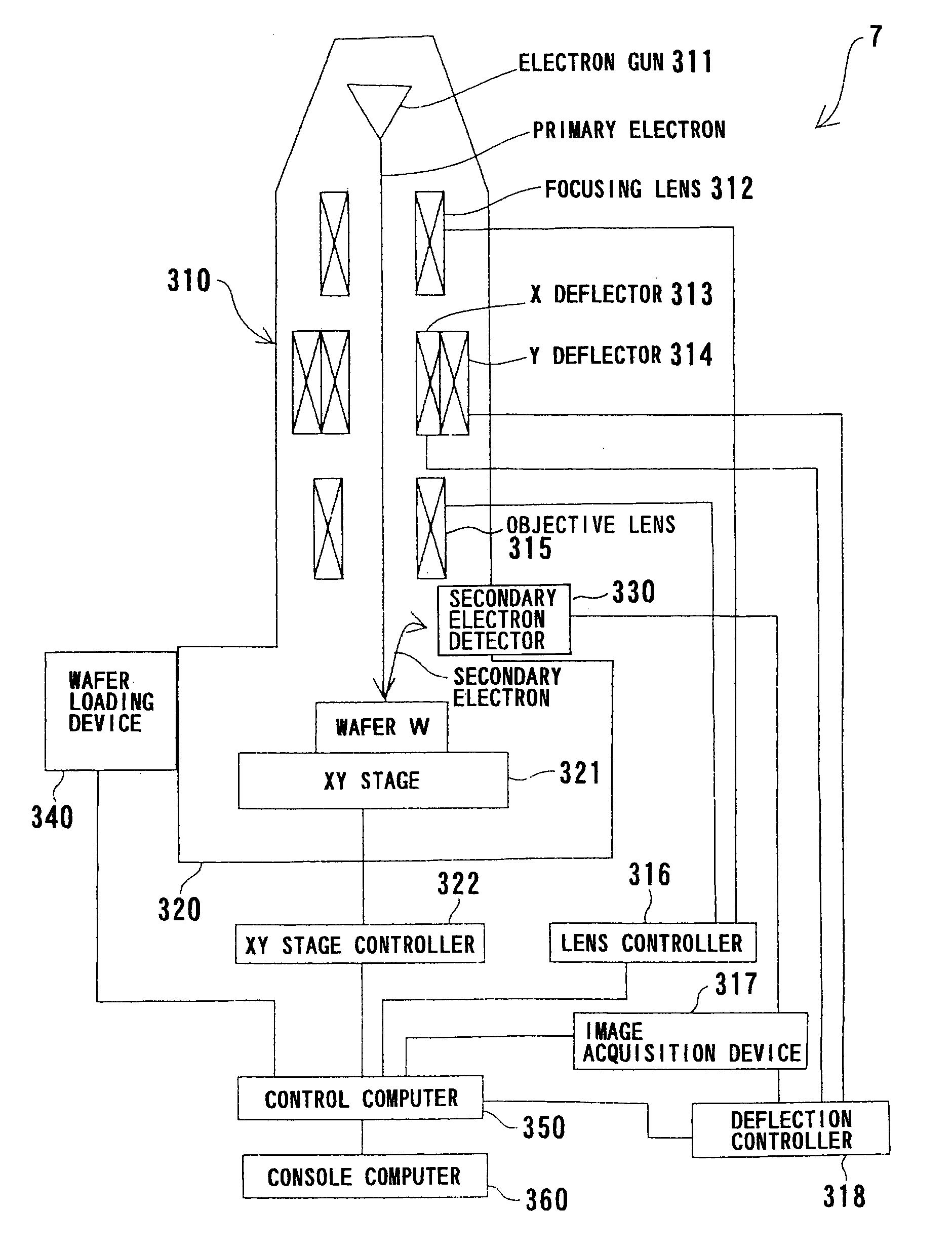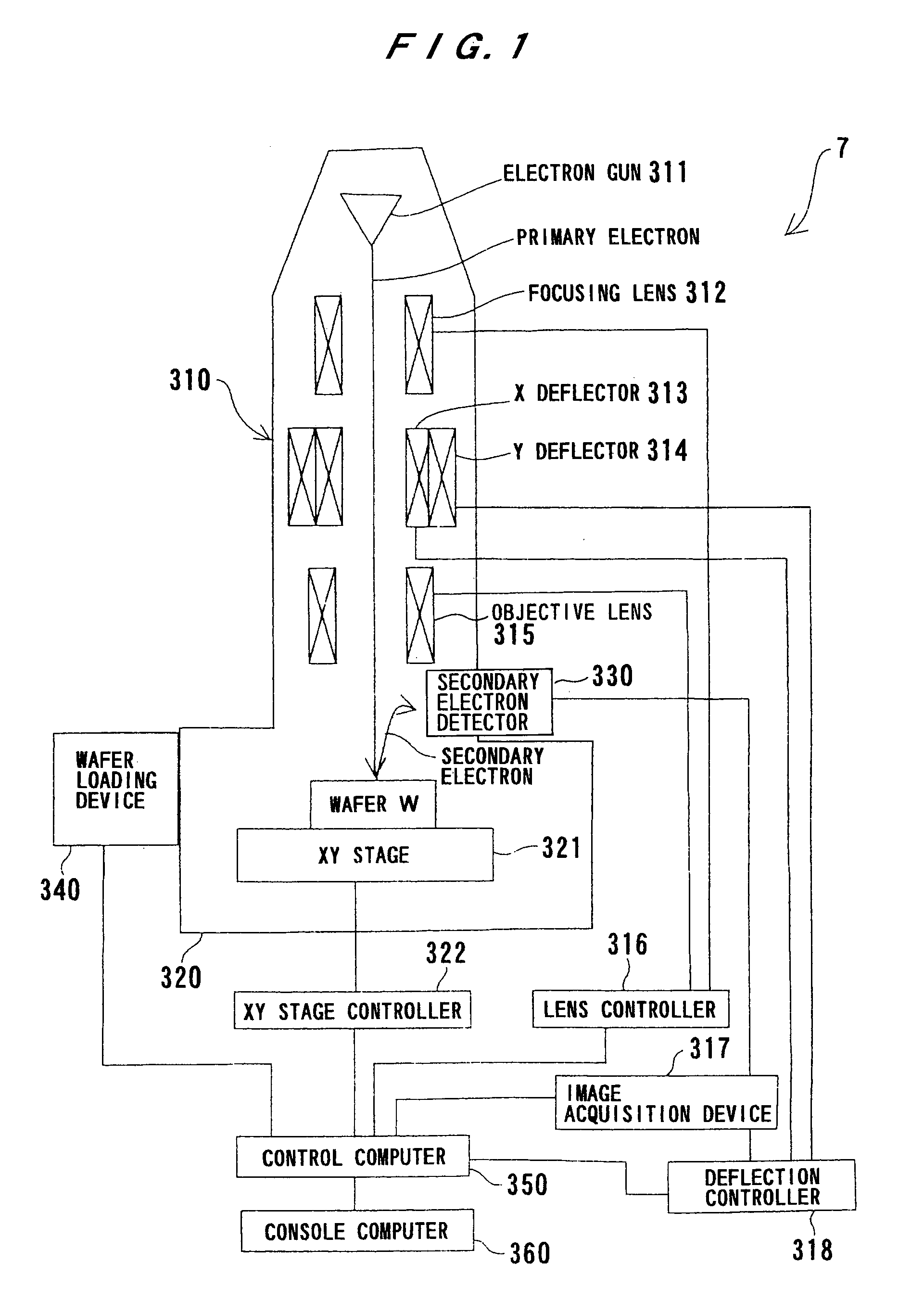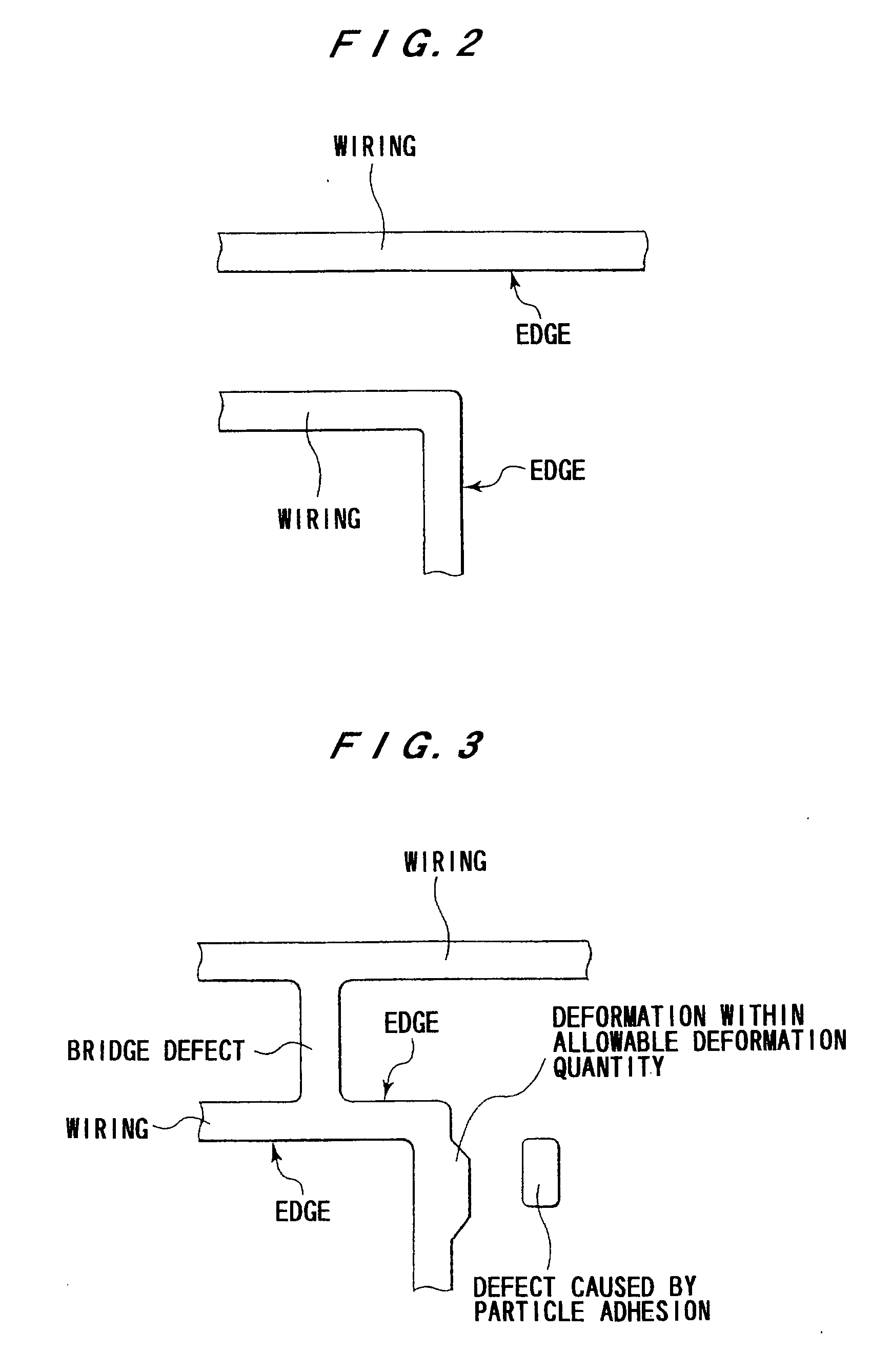Pattern inspection apparatus and method
a technology of pattern inspection and apparatus, which is applied in the direction of image enhancement, semiconductor/solid-state device testing/measurement, instruments, etc., can solve the problems of fine defects existing in a place except a corner that cannot be detected, and the corner roundness of a pattern formed on a wafer is likely to be detected as a defect, and the pretreatment may not be perfect to prevent the corner roundness of the pattern from being detected
- Summary
- Abstract
- Description
- Claims
- Application Information
AI Technical Summary
Benefits of technology
Problems solved by technology
Method used
Image
Examples
Embodiment Construction
[0179]Contents[0180]1. Overview[0181]2. Hardware configuration[0182]2.1 Basic arrangement of image generation device[0183]2.2 Scan methods of image generation device[0184]2.3 Basic arrangement of pattern inspection apparatus[0185]2.4 Functional block diagram[0186]3. Explanations of terms[0187]3.1 Edge[0188]3.2 Reference pattern[0189]3.3 Recipe data[0190]3.4 Inspection-unit-area[0191]3.5 Inspection results[0192]4. Basic Inspection processing[0193]4.1 The first edge detection[0194]4.1.1 The first edge detection method 1[0195]4.1.2 The first edge detection method 2[0196]4.2 Line-shaped pattern matching method[0197]4.2.1 Matching method in which unique pattern is used[0198]4.2.2 Matching method in which negative pattern is used[0199]4.2.3 Matching method in which projection data obtained by projecting edge on the horizontal and vertical axes are used[0200]4.3 Matching method in which geometrical information for isolated pattern is used[0201]4.4 Matching method in which statistics for is...
PUM
 Login to View More
Login to View More Abstract
Description
Claims
Application Information
 Login to View More
Login to View More - R&D
- Intellectual Property
- Life Sciences
- Materials
- Tech Scout
- Unparalleled Data Quality
- Higher Quality Content
- 60% Fewer Hallucinations
Browse by: Latest US Patents, China's latest patents, Technical Efficacy Thesaurus, Application Domain, Technology Topic, Popular Technical Reports.
© 2025 PatSnap. All rights reserved.Legal|Privacy policy|Modern Slavery Act Transparency Statement|Sitemap|About US| Contact US: help@patsnap.com



